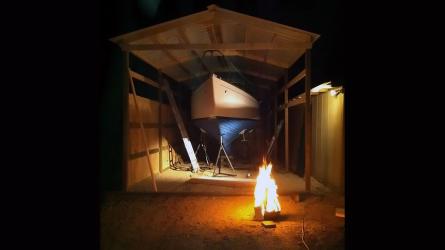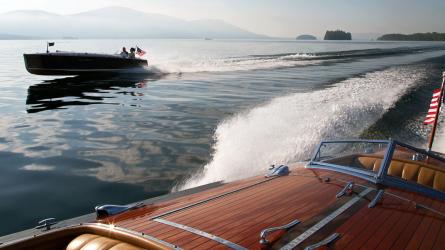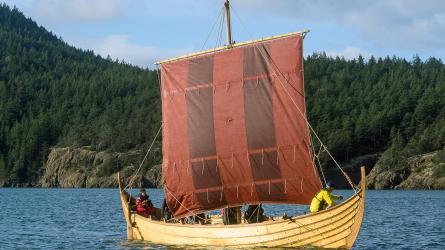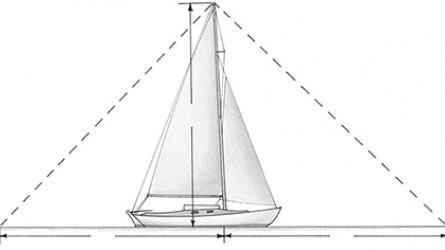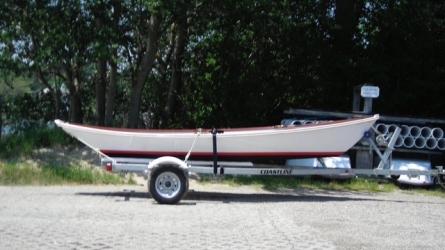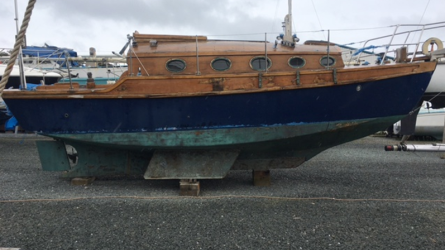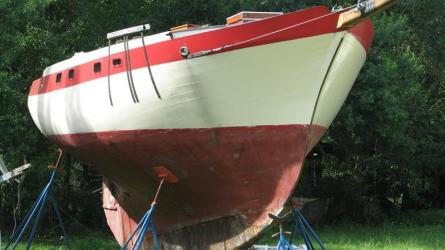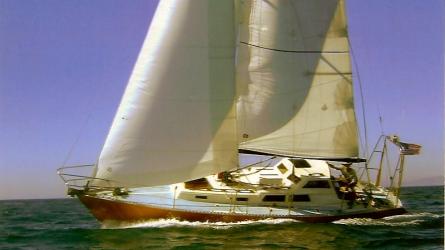July / August 2021
Thoughts on Lapstrake Planking

Harry Bryan, at the helm of a lapstrake-planked boat built to his Rambler design, has been building boats of the type for decades in Letete, New Brunswick.
The first boat to come out of our shop in New Brunswick, Canada, was a carvel-planked steam launch completed in 1976. We went on to build numerous boats, many of which were lapstrake-planked. As I think back to those early years, I recall that the books and articles I depended on to increase my knowledge of lapstrake planking left many questions unanswered, even though in some ways that type of planking is more forgiving than carvel.
What follows are some answers that time and experience have cleared up for me, and I hope they will help take some of the mystery out of lapstrake planking for others. I will focus here on planking in which only one edge of each plank is beveled, which is by far the most common method and the easiest to understand.
The drawings all show a hull built upside down, which is a common method, but the references can be confusing: just as starboard is always starboard and port is always port, “up” is always toward the sheer and “down” is always toward the keel, regardless of the boat’s orientation on the building jig.
To read the rest of this article:
Click the button below to log into your Digital Issue Access account.
No digital access? Subscribe or upgrade to a WoodenBoat Digital Subscription and finish reading this article as well as every article we have published for the past 50-years.
ACCESS TO EXPERIENCE
2-for-1 Print & Digital Subscription Offer
For this holiday season, WoodenBoat is offering our best buy one, get one deal ever. Subscribe with a print & digital subscription for $42.95, and we’ll give you a FREE GIFT SUBSCRIPTION to share with someone special.
1 YEAR SUBSCRIPTION (6 ISSUES)
PLUS ACCESS TO MORE THAN 300 DIGITAL BACK ISSUES
PRINT+DIGITAL $42.95
Subscribe
To read articles from previous issues, you can purchase the issue at The WoodenBoat Store link below.
 Purchase this issue from
Purchase this issue from




